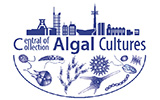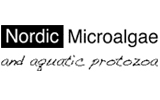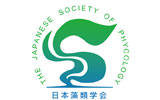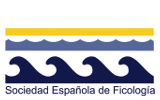Caulerpa taxifolia (M.Vahl) C.Agardh 1817
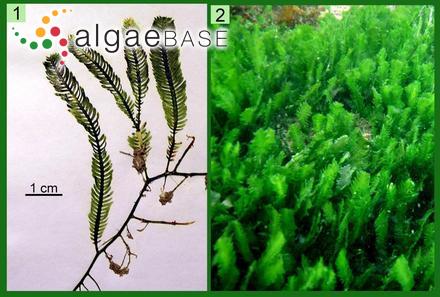
Current name:
Caulerpa taxifolia (M.Vahl) C.Agardh
1. Habit. 2. Upper subtidal (Phu Quoc Island, Vietnam). - 29 February 2012. Eduard and Tamara Titlyanova (etitlyanov@mail.ru)
Publication Details
Caulerpa taxifolia (M.Vahl) C.Agardh 1817: xxii
Published in: Agardh, C.A. (1817). Synopsis algarum Scandinaviae, adjecta dispositione universali algarum. pp. [i]-xl, [1]-135. Lundae [Lund]: Ex officina Berlingiana.
Publication date: Mai-Dec 1817 (p. vii: i Mai 1817)
Type Species
The type species (lectotype) of the genus Caulerpa is Caulerpa prolifera (Forsskål) J.V.Lamouroux.
Status of Name
This name is of an entity that is currently accepted taxonomically.
Basionym
Fucus taxifolius M.Vahl
Type Information
Type locality: St. Croix, Virgin Islands; (Silva & al. 1996: 846)
General Environment
This is a marine species.
Created: 12 December 1997 by M.D. Guiry.
Last updated: 14 May 2024
Verification of Data
Users are responsible for verifying the accuracy of information before use, as noted on the website Content page.
Nomenclatural note
Caulerpa taxifolia (H.West) C. Agardh 1817: xxii (Belton et al., 2019). - (02 March 2020) - G.M. Guiry
Taxonomic note
Records of C. taxifolia may in some instances be referable to C. mexicana which was for a time regarded as a synonym of this entity. John et al.(2004) cite Caulerpa pectinata Kütz. and Caulerpa pinnata(L.) Weber Bosse as synonyms of this species. - (11 May 2006) - G.M. Guiry
Distributional note
Caulerpa taxifolia introductions are now a global problem with populations in the Mediterranean, Australia and California. The aquarium trade is partly responsible for spreading the entity. According to John et al. (2004), "Doubt inevitably attaches to many of these records since some might be more correctly attributed to C. mexicana, a species which has erroneously been placed in the synonymy of C. taxifolia. The latter is not known to occur in the Canary Islands, see Haroun et al. (2002)." Regarded as a serious pest in South Australia (Womersley 2003: 499). Kraft (2007: 178): "This alga has been introduced in to the Sydney area, New South Wales and has spread to the detriment of native species. Molecular analyses has found these populations to match the aquarium escapee vegetative strain that has had disastrous consequences in the Mediterranean, California ... and elsewhere. However, Lord Howe Island representatives long predate the mainland introductions and are more closely related to populations from Indonesia, New Caledonia and the Red Sea, indicating that they are unlikely to be antropogenically derived." Verlaque et al. (2015: 259) confirm that Mediterranean populations "escaped from an aquarium [a public one] at Monaco;..". The initial introduced strain in the Mediterranean was from SE Australia but other introduced strains appear to be from the SW Pacific (Australia). - (11 May 2006) - G.M. Guiry
Habitat note
On rocky and sandy bottom sheltered from waves, as a dominant species in communities with Jania rubens, Padina pavonica and Halimeda tuna (Turan et al. 2011). - (01 November 2012) - G.M. Guiry
Conservational note
conservational note - (06 November 2015) - Pier Kuipers
Linking to this page: https://www.algaebase.org/search/species/detail/?species_id=1413
Citing AlgaeBase
Cite this record as:
M.D. Guiry in Guiry, M.D. & Guiry, G.M. 14 May 2024. AlgaeBase. World-wide electronic publication, National University of Ireland, Galway. https://www.algaebase.org; searched on 18 April 2025
 Request PDF
Request PDF


